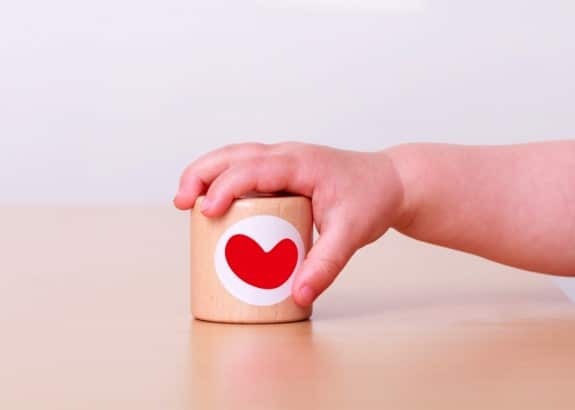Altruism—the giving of something that is personally costly—has been shown to promote physical and psychological well-being adults, but until now, no one really knew if that benefit transferred to children. A new study, published in Psychological Science, now says that there are benefits for children, even as early as age four!
“Our findings suggest that fostering altruistic tendencies might be one path to promoting better health and well-being for all children,” Jonas Miller of the University of California Davis, told Science Daily.
In their study, researchers recruited 74 preschoolers from the local community. Researchers played with the children one by one and explained that they would earn tokens that they could trade for prizes at the end of their visit. Toward the end of their visit, the children were given an opportunity to donate some or all of their prize tokens to fictitious sick children that couldn’t come to the lab.
Electrodes were attached to each child’s torso to collect physiological data, including heart rate and vagal tone (indicates influence of the vagus nerve, which connects the brain with other key organs and provides a useful measure of the body’s ability to regulate psychological stress responses). High vagal tones are related to feelings of being safe and calm, and, according to Miller, are associated with better behavior, physical health, and social skills among children.
Vagal tones were measured during three different stages: during the instruction phase, the decision phase (which included the token donation opportunity), and the conclusion phase (when researchers returned to the room, closed the token boxes without peeking, and put everything away).
Data showed that children who sacrificed their tokens to help sick children had greater vagal flexibility during the task, indicating they had better physiological regulation throughout. And the act itself was associated with higher vagal tones at the end of the task.
“We usually think of altruism as coming at a cost to the giver, but our findings suggest that when children forgo self-gain to help people who are less fortunate, they may get something back in the form of higher vagal tone,” Miller explained. “It means we might be wired from a young ae to derive a sense of safety from providing care for others.”
Researchers has also looked socioeconomic status to determine if and how that affected the child’s willingness to donate. All of the children were from middle- to upper-middle class homes, with an average income in the $75,000-$90,000 range. Those from wealthier families tended to share less than those that were from less wealthy families. This, too, is telling, Miller says.
“This implies that certain aspects of high-SES culture that have been observed in adults, such as increased self-focus and decreased social sensitivity, might be present in children as young as 4 years of age,” Miller said, adding that “the findings provide us with a new understanding of how children’s altruistic behaviors, family wealth, and physiological health are intertwined.”
Related Articles:
- Solid Foods Being Fed to Infants Too Early, CDC Says
- Modern Dads Do Diapers, but Not Baby Talk, and It’s Not a Bad Thing, Experts Say
- Use of Antibiotics in Infancy May Disrupt Gut Microbes and Cause Illness Late in Life







